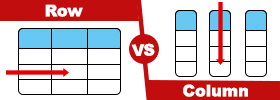Difference between HD and 3D
Key difference: HD basically entails a resolution that is higher than the standard. HD generally refers to images with 720 horizontal lines or more. 3D, on the other hand, refers to Three-Dimensional (3-D). It is a format of motion picture that allows the viewer to perceive flat images in 3-D or life-like. It gives an illusion of depth to the video.
 HD, also known as High-definition, and 3D is all the rage right now. It seems everyone wants an HD Television or wants to watch HD videos. Also, practically all movies being released these days are in 3D. However, many people do not realize what HD or 3D actually entails.
HD, also known as High-definition, and 3D is all the rage right now. It seems everyone wants an HD Television or wants to watch HD videos. Also, practically all movies being released these days are in 3D. However, many people do not realize what HD or 3D actually entails.
HD basically entails a resolution that is higher than the standard. Originally, HD referred to videos that had more than 480 horizontal lines or 570 lines; 480 horizontal lines in North America and 570 lines in Europe. The numbers correspond to the lines of pixels that are displayed horizontally. While the video images of more than 480 horizontal lines or 570 lines are still technically considered as high-definition, in today’s world HD generally refers to images with 720 horizontal lines or more.
The Advanced Television Systems Committee (ATSC) has divided HD into three main categories:
- 720p (720x1280 - 720 lines, progressive scanned)
- 1080i (1080x1920 - 1,080 lines, interlaced scanned)
- 1080p (1080x1920 - 1,080 lines, progressive scanned)
In addition to the three HD categories mentioned above, there are also the ultra high-definition video modes, which include 2000p, 2160p, 2540p, 4000p and 4320p. However, these video modes or the technology supporting these video modes are currently not available to the public and hence, the video modes are not even mentioned.
The ‘p’ or ‘i’ in the categories refers to ‘progressive scanned’ and ‘interlaced scanned’, respectively. In the "Progressive-scan" format, the lines of pixels are displayed sequentially, which means the one sequence of the pixels are loaded, then the other, then the other, etc. Comparatively, in the “interlaced scan” format, the odd lines are display first, then the even lines. The interlaced scan format is the older used format, and is traditionally used in analog television systems. The progressive-scan format usually results in a smoother and cleaner image than the interlaced version.
The 720p resolution is commercially known as HD Ready. Many manufactures label their products that display at least 720p video images as HD Ready. Some may even have the ability to show 1080i or even 1080p. Whereas, products that are capable of displaying 1080p videos are labeled as Full HD. HD Ready and Full HD are generally just marketing terms, used to lure customers.
 3D, on the other hand, refers to Three-Dimensional (3-D). It is a format of motion picture that allows the viewer to perceive flat images in 3-D or life-like. It gives an illusion of depth to the video.
3D, on the other hand, refers to Three-Dimensional (3-D). It is a format of motion picture that allows the viewer to perceive flat images in 3-D or life-like. It gives an illusion of depth to the video.
3D is derived from stereoscopic photography. There are mainly two ways of creating a 3D image. One is to use a regular motion picture camera system to shoot the image from two distinct angles and then using computer software to align those images to give depth. Another and the more recent is to use a 3D camera, which takes the images simultaneously which can then be aligned using software.
In order to view the 3D images accurately, one has to use special projection hardware and the viewers need to wear special eyewear, i.e. the 3D glasses. 3D is not a new development, in fact is it quite old. It dates back to 1915, older than “colored movies” and “talking pictures.” However, today it has seen a major resurgence and popularity. While, a few years back, only the theaters were able to play 3D movies, now we have 3D technology incorporated in our TVs, and even in some smartphones.
Image Courtesy: seeklogo.com, swordswallower.com









Comments
Rahul Sarjan
Mon, 05/29/2017 - 08:57
very much informative even for layman - tha
CHANDRA SEKHAR ...
Wed, 04/16/2014 - 06:24
Add new comment